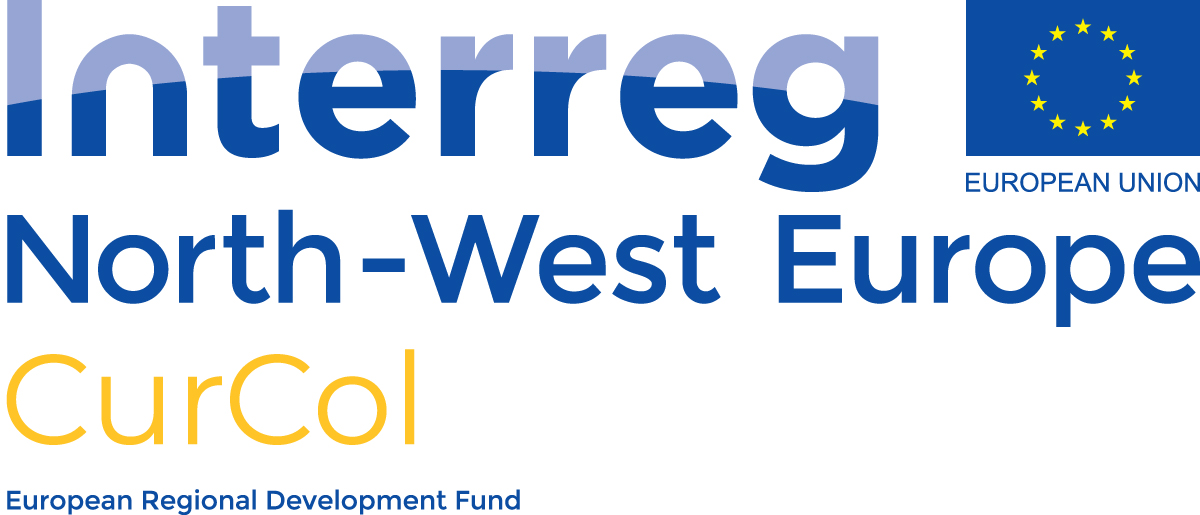Curcuma: from cultivation to biobased colorant
Did you know that we produce about 87 million tons of packaging waste per year in Europe? The good news is that a part of this is biobased packaging that is recyclable or biodegradable. The bad news is that these processes still release non-biodegradable and often toxic synthetic colorants. We can counter this by using natural colorants. In the Interreg Northwest Europe project CurCol, we investigate the color production and application in bioplastic and paper packaging, based on the yellow natural colorant curcumin. And that process already starts with the cultivation of the turmeric plant.

The few available biodegradable colorants currently do not meet industrial quality criteria, which means that the packaging industry does not use them as an alternative to fossil-based colorants. Partners from Ireland, Germany, Belgium and the Netherlands are joining forces in the CurCol project to change this.
UV stability
The root of the turmeric plant contains curcumin: a bright yellow pigment. Curcumin is already used in food and pharmaceutical products, but widespread use of the colorant has been hindered, mainly due to its poor UV stability. Recent research shows that it is possible to improve UV stability and generate other colors such as red and blue. With these three primary colors, all colors can be made as desired. This, in combination with the right quality criteria, makes environmentally friendly biobased colors a lot more attractive for production companies in the future.
Colors Chain
Within CurCol we look at the entire chain, from turmeric plant cultivation to the end product; the naturally colored biobased packaging. What is CurCol going to work with?
- Optimization of the regional turmeric production for coloring purposes. Consider, for example, the development of a cultivation manual for growers.
- Extraction and production of three UV-stable biobased colors from curcuma.
- Testing the curcumin-based colors against industry guidelines and creating masterbatches.
- Application of curcumin colors in bioplastic and paper packaging. A Technical Economic Analysis makes it clear whether the products meet the standards for production and costs.
- A Life Cycle Assessment shows to what extent the entire process is more sustainable than with the use of fossil colorants.
Furthermore, a demonstration kit is being developed with material samples and specifications for the use of biobased colors in packaging materials. With this we want to inspire as many production companies as possible and show them what the possibilities are.
The results of CurCol support the packaging and horticulture companies and contribute to the transition to a circular and biobased economy. The future looks curcumin bright!
Project partners:
- Avans University of Applies Sciences
- Provinciaal Proefcentrum voor de Groenteteelt Oost-Vlaanderen (PCG)
- Centexbel
- Rubia 100% Natural Colours
- Athlone Institute of Technology
- Maastricht University/Aachen-Maastricht Institute for Biobased Materials
- DeltaQ
- Westfälische Wilhelms-Universität Münster
- Rodenburg Biopolymers
Are you interested in the progress and results of this project?
Relevant links
Also read
-
Teacher Information Points at UM
UM faculties now host Teacher Information Points (TIPs) that offer local, “just-in-time” and on-demand support for teaching staff. The aim is simple: to provide help that is closely connected to day-to-day teaching practice.

-
In Kerkrade, you can listen to the invisible universe
UM and Discovery Museum in Kerkrade make the Einstein Telescope understandable for everyone.

-
UM to play a more prominent role in Dutch scientific infrastructure
Eleven consortia from various scientific disciplines are set to launch projects of great value to science. The Dutch government is making a total of €197 million available for this purpose. Scientists from Maastricht University (UM) are closely involved in seven of the eleven projects.
